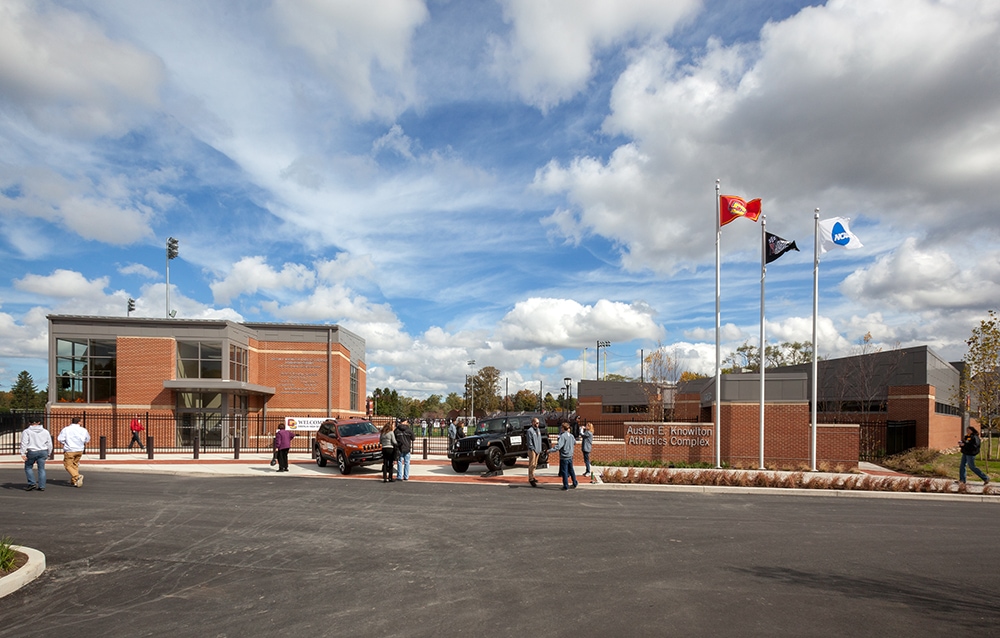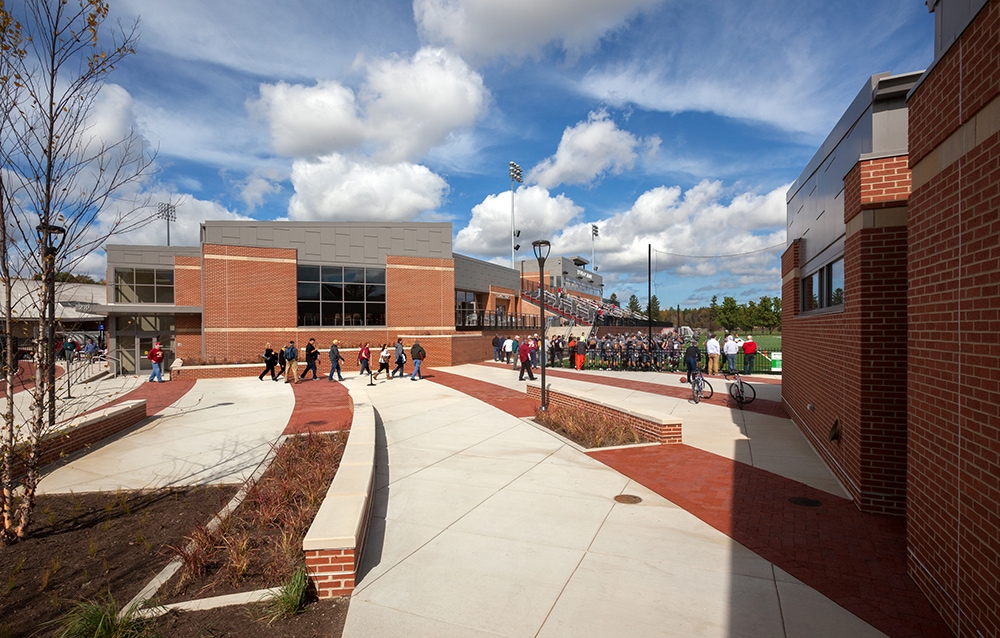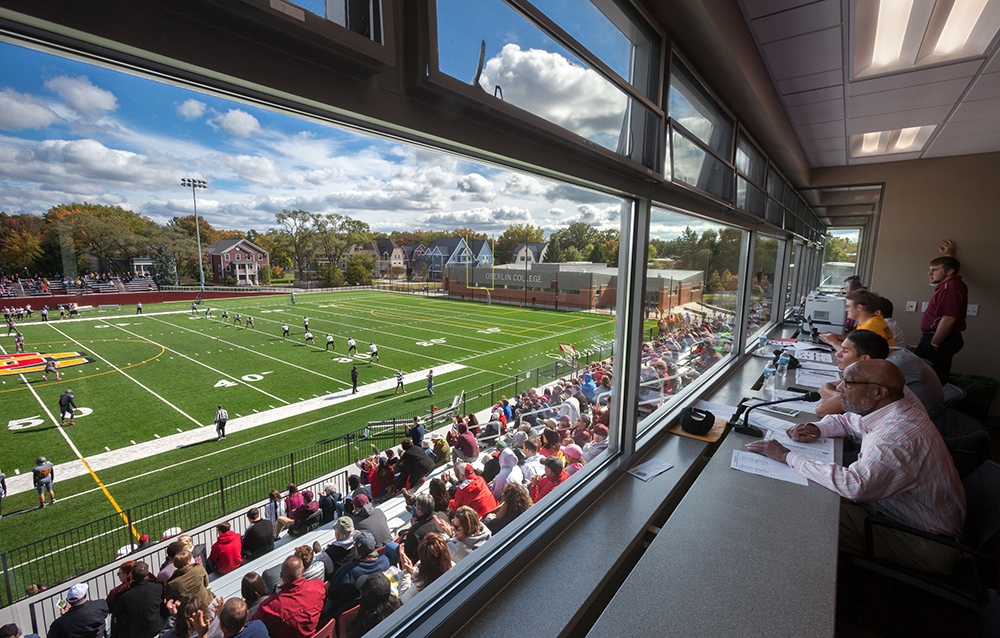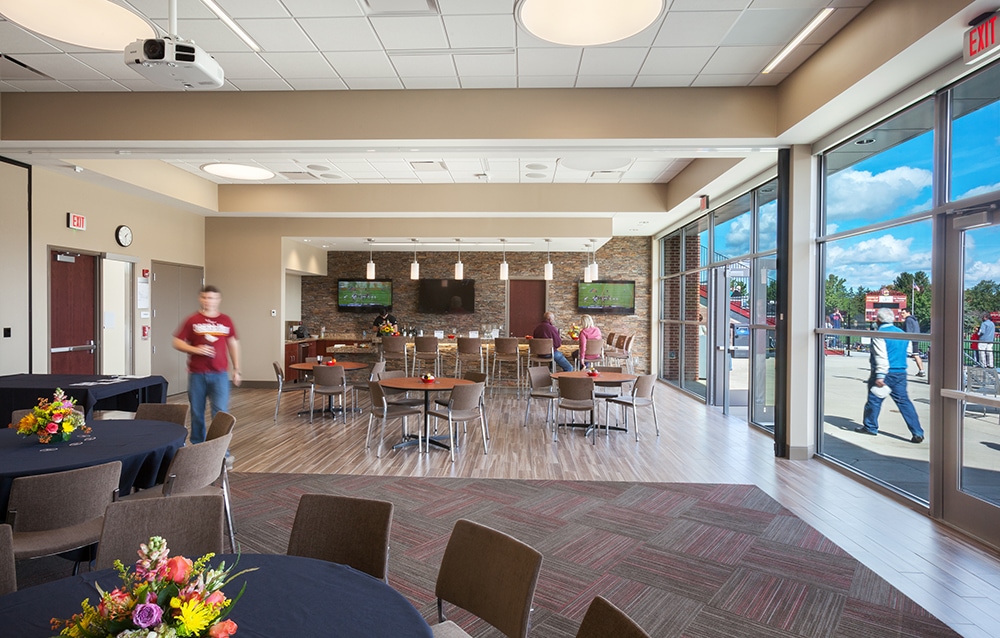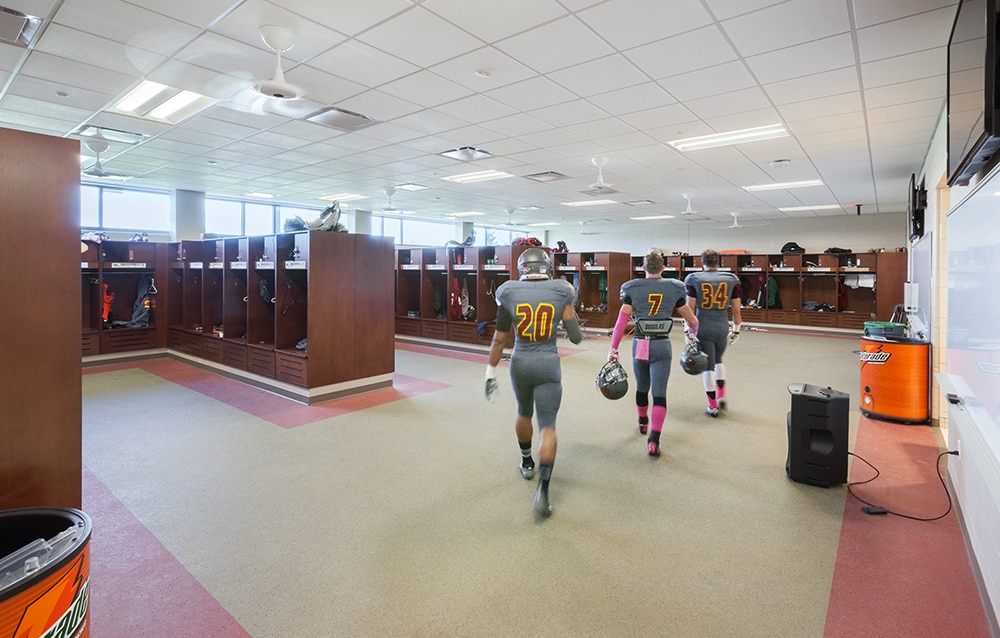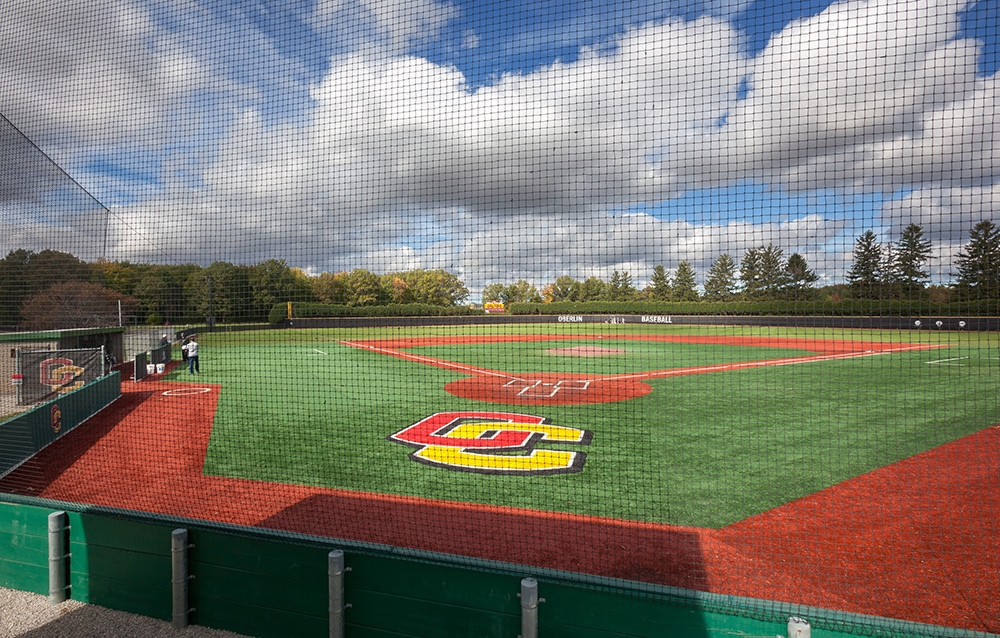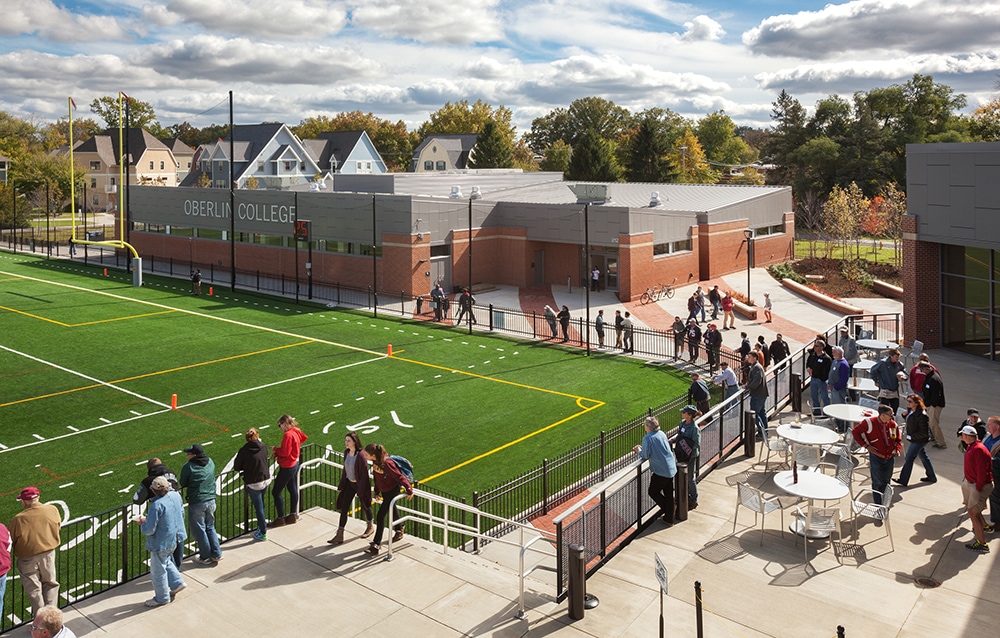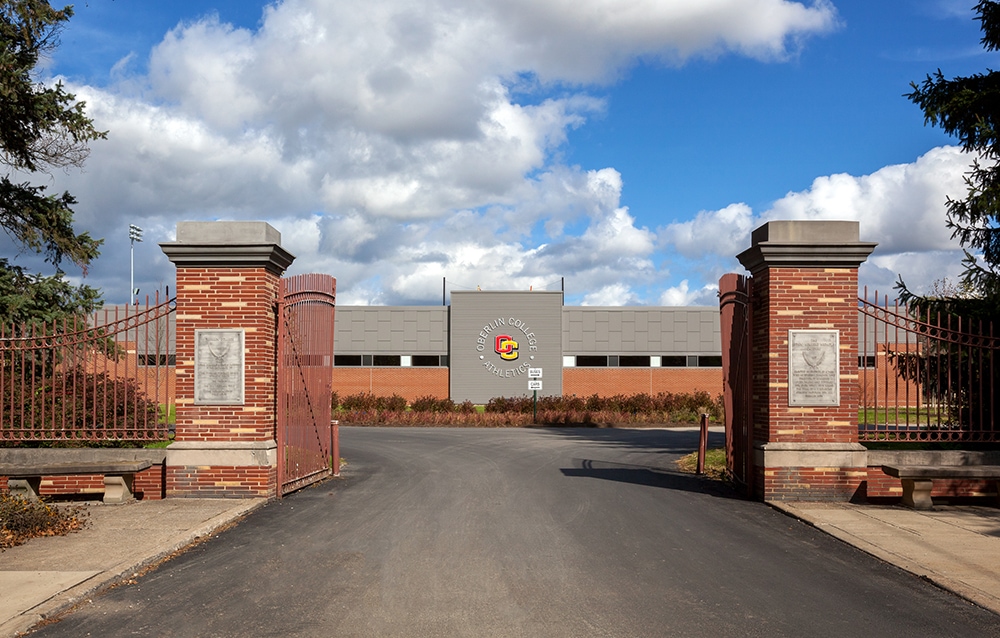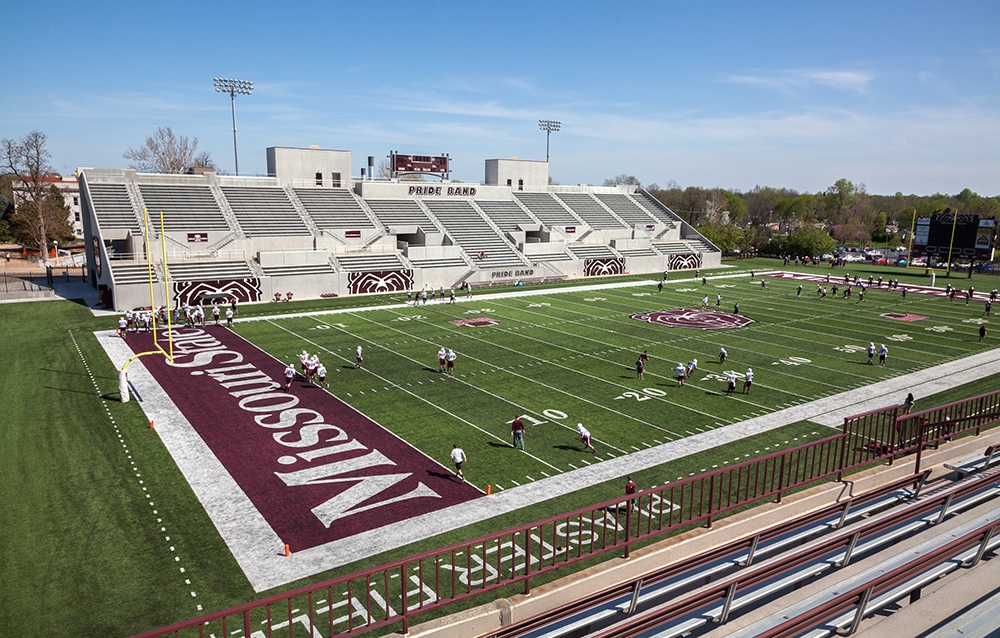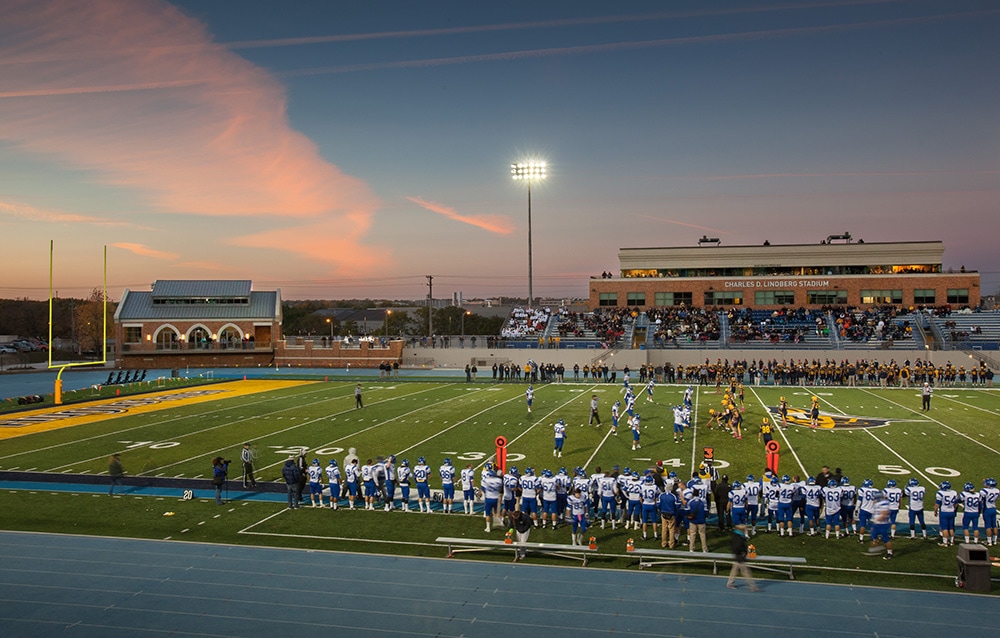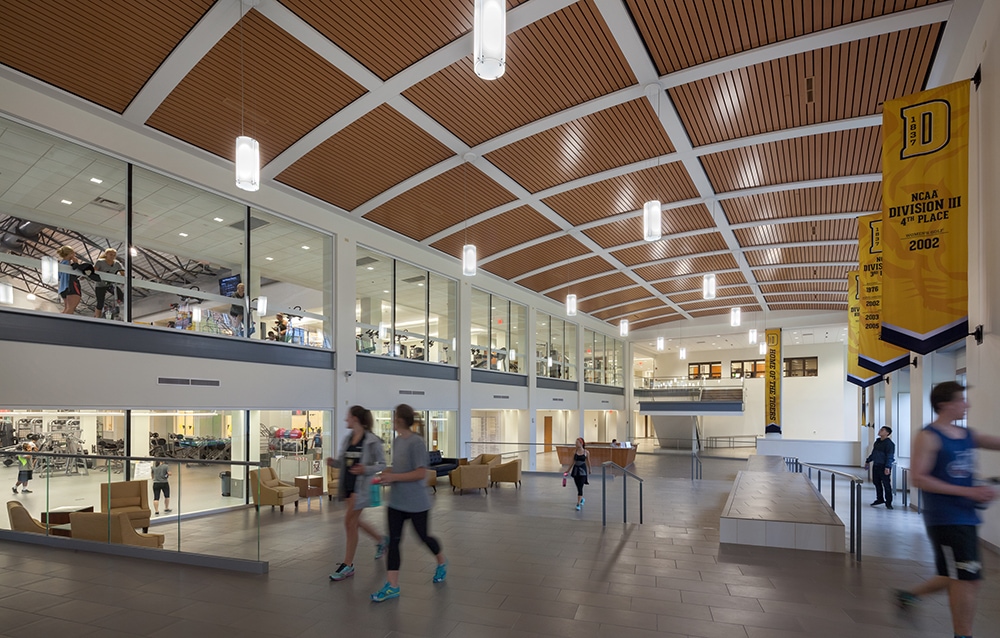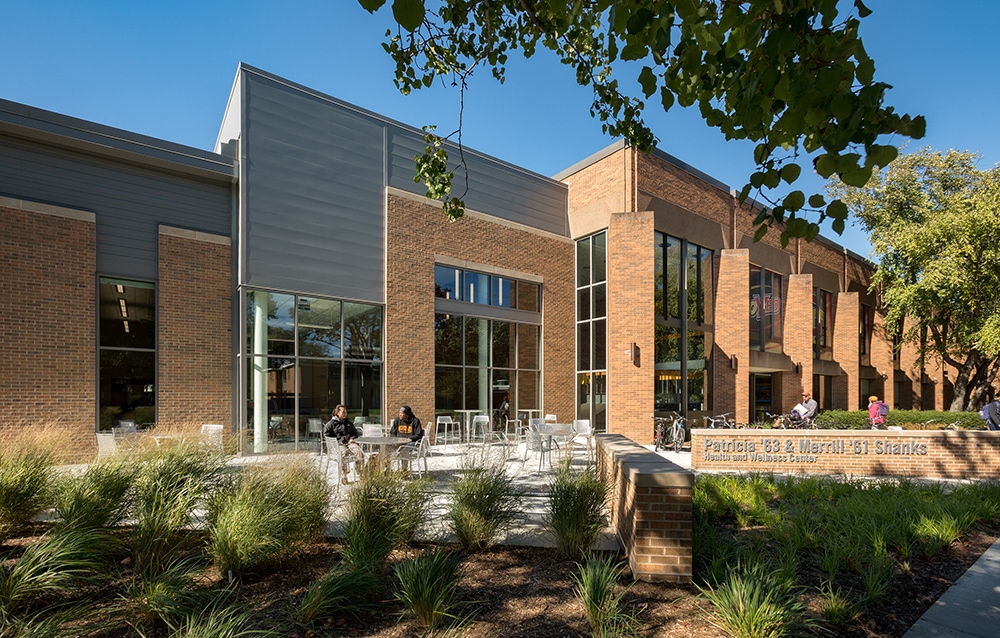Knowlton Athletics Complex
The Austin E. Knowlton Athletics Complex replaced the nearly 100-year-old Savage Football Stadium. The 2,000-seat multi-purpose facility was built with lights, so the teams could play evening games for the first time in the school’s history. The design team met with a variety of stakeholders — trustees, coaches, students, facilities planning, IT and custodial staff — early in the process to gain consensus on overall needs of the new facility. That proactive approach led to all users feeling they had a voice in determining the final outcome. The project includes an alumni club room with exceptional views of the field, a press box and concessions. In addition, the facility includes a 3,000 SF conference space that is able to be subdivided as needed. The meeting room is branded with the Oberlin logo and school colors, and includes large overhead projectors, flat screen TVs and a bar. While not a LEED-certified facility, the project followed the College’s stringent sustainability criteria and included extensive sustainable features:
- Concrete stands were reduced to 6,775 tons of engineered fill and reused on the site.
- Landscaping incorporates rain gardens (bioretention basins) that capture and hold stormwater to promote water infiltration into the ground and evaporation to the atmosphere.
- Artificial turf was filled with layers of 293,000 pounds of recycled rubber crumbs.
- Goal posts and existing lockers were removed and donated to Oberlin High School to reduce waste.
- Locker room flooring is made of recycled rubber.
- All interior lighting is LED.
- Daylight harvesting is used wherever possible.
The new complex was built on the site of the old stadium, creating a tight construction schedule. Construction could not begin until the football season was complete in November, and had to be finished by the start of the next season in September. Great care was taken to ensure visitors are able to navigate the new grounds easily. Impressive gates greet fans as they enter the landscaped plaza. In a nod to the city of Oberlin, the plaza walkways are accented with the same red bricks as found on the Tappan Square, a National Historic Landmark. The multi-purpose complex benefits more than 400 student athletes and the local community.
